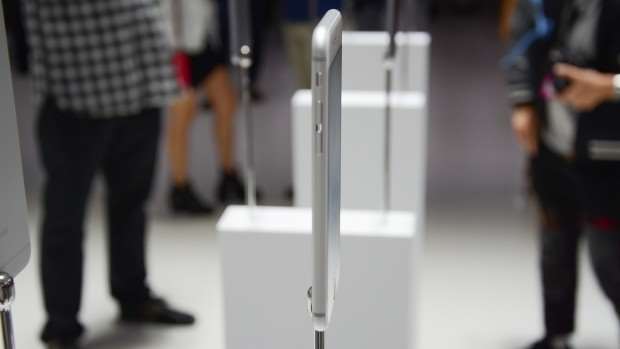Camera
Rumours were circulating long before the launch that the iPhone 6s' iSight camera would see a major upgrade. Well, it looks as if those rumours were correct. The iPhone has upgraded it rear-facing and front-facing camera specifications significantly.
The rear-facing camera has jumped from 8- to 12-megapixels with a larger sensor that's been tweaked to prevent crosstalk noise reducing image quality, while the front-facing camera is now a 5-megapixel unit. The front-facing camera is also accompanied by a new screen-based TrueTone flash, a welcome feature for narcissists everywhere.

Based on the success of Apple's “Shot on iPhone” advertising campaign, it could be argued that boosting the iPhone's camera was just an exercise in keeping up with the Joneses. And it probably is. However, it's welcome none-the-less.
Perhaps the most impressive upgrade to the camera is the leap to 4K-video capture, bringing the iPhone's camera on par with the competition. With Apple refusing to adopt entertain a microSD expansion option, the ability to record 4K video will raise concerns about storage management, however, especially for those who opt for the lower capacity 16GB models.
Processor and storage
As ever, Apple continues to make steady progress with its mobile processors. We're now up to the A9, which here is coupled with the M9 coprocessor.
Inevitably, this will help the iPhone 6s to faster benchmark scores than the iPhone 6; indeed, Apple says its new processor is 70 percent faster than the A8 for CPU tasks, and a huge 90 percent quicker for graphics. If true, those are some pretty impressive numbers, especially since the A8 is one of the fastest chips we've encountered in any smartphone.

Obviously, I can't say precisely how much faster it is yet, or make any comment about how that might affect battery life as I've had so little time with the phone. You'll have to wait a dozen or so days for Alphr to get the iPhone 6s into the labs back in the UK for proper testing before I can tell you that.
As for storage, the big news is that there's no news. I had hoped that, with the iPhone 6s, the 16GB model would be dropped. Instead, the iPhone will be available in the same range of capacities as last year: 16GB, 64GB and 128GB.
Design
The main headline when it comes to design is that the iPhone 6s (and its companion the 6s Plus) will now be available in a rose-gold finish. For the life of me I can't imagine why you'd want to buy this. The rose-gold iPhone 6s looks like a gold one with too much fake tan, but hey, rose-gold is fashionable in smartphone circles these days.
Otherwise, the look of the phone remains exactly the same as last year: flat at the front and back with subtly curved glass at the borders of the screen, an aluminium unibody (slightly tougher this year, employing 7000-series aluminium) and the same slightly protruding camera housing at the rear. The Touch ID fingerprint sensor looks the same, too, despite being upgraded. It will now recognise your digit faster than ever.
Next: our early verdict








.png&h=142&w=230&c=1&s=1)




.jpg&w=100&c=1&s=0)










